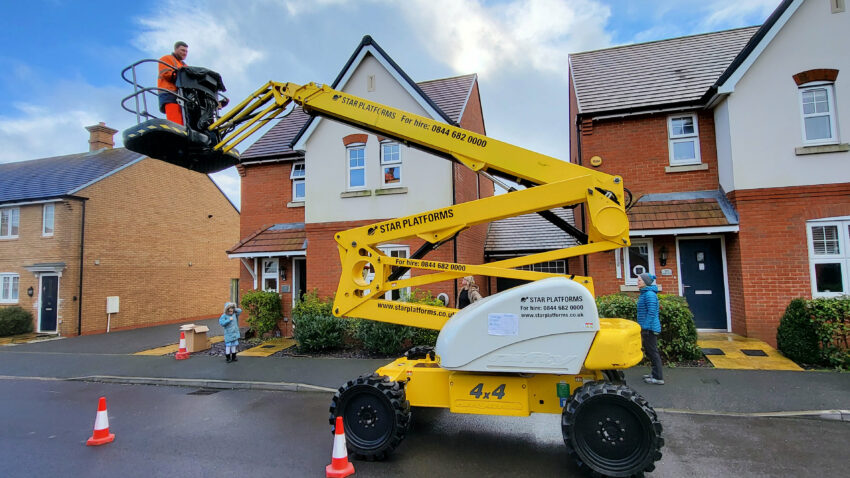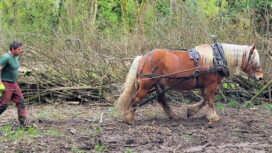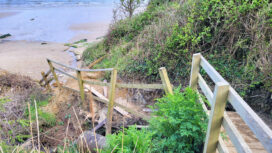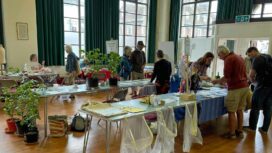With spring just around the corner, families in Wareham are getting ready to give some flying visitors from Africa brand new homes to move into.
The arrival of house martins was once a certain sign of warmer days arriving, but the birds’ numbers in southern England have declined by 75 percent in just two generations and now they are a red listed species.
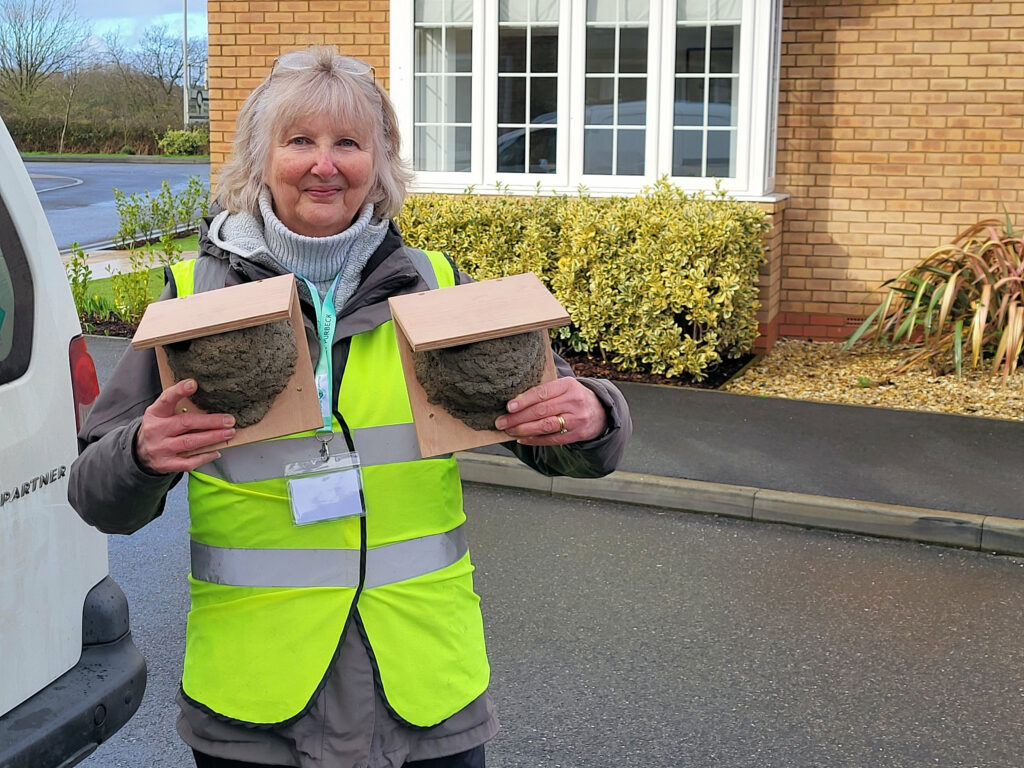
Julie Hatcher of Sustainable Wareham with two of the artificial house martin nest cups
Ready to use nest cups put up
A drop in the number of insects they feed on, loss of habitat and an increase in extreme weather events have threatened the future of the tiny birds, but Sustainable Wareham has stepped in to provide instant homes for the visitors.
A dozen artificial house martin nest cups were put up on new build homes on the Westgate estate opposite The Purbeck School, where a colony of the birds has shown signs of returning year after year.
With the loan of a cherry picker from Bradfords building supplies, the custom made woodcrete nests were carefully placed high in the eaves of estate homes on Saturday 24th February 2024.
It is hoped that when the house martins begin to return to Purbeck from the middle of March through to May, the ready to use nests will allow them to get on with the serious task of raising a family sooner.
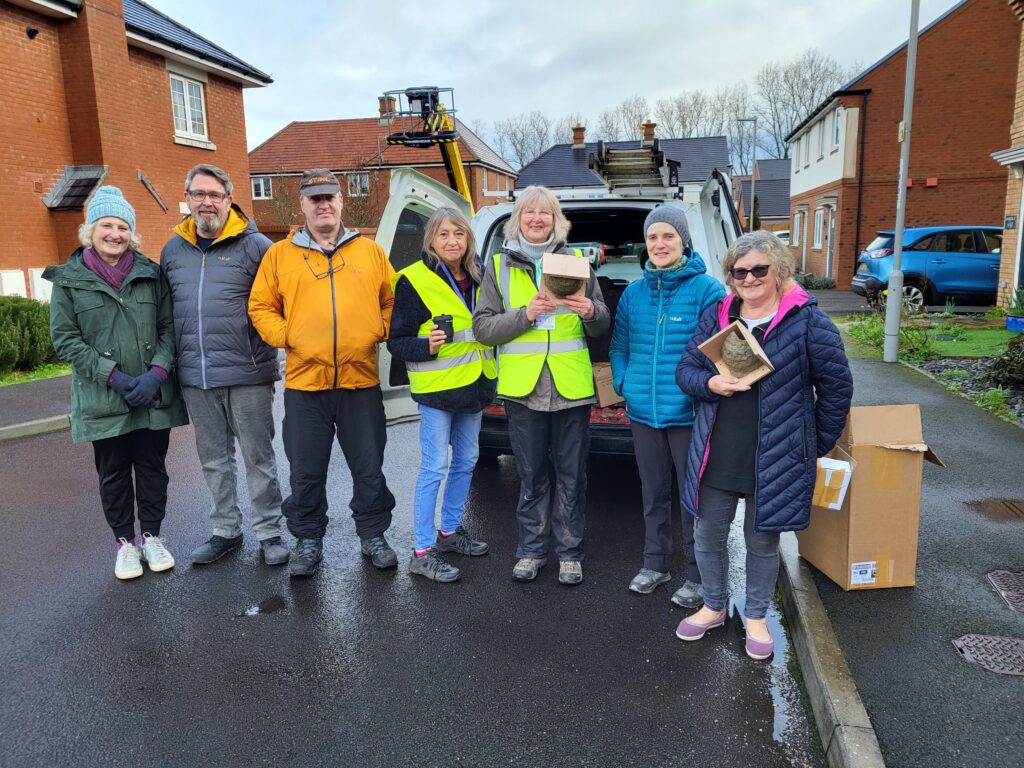
Sustainable Wareham volunteers with local residents of the Westgate estate
“They have almost all gone now”
Sustainable Wareham spokesperson and house martin project leader Julie Hatcher said:
“When my husband and I moved into Wareham 18 years ago, one of the first things we noticed was loads of house martins flying around and almost every house had a nest.
“They have almost all gone now in that short space of time, so when we found there was a strong colony here on a new estate I felt that we had to do something to help.
“House martins collect beakfuls of mud and build up a mud nest in the eaves or apexes of houses, where they are safer.
“They usually build on older houses, as newer houses have plastic soffits and smoother bricks, and after a while their mud nests will come away from the wall and fall, destroying any eggs or killing the chicks.”
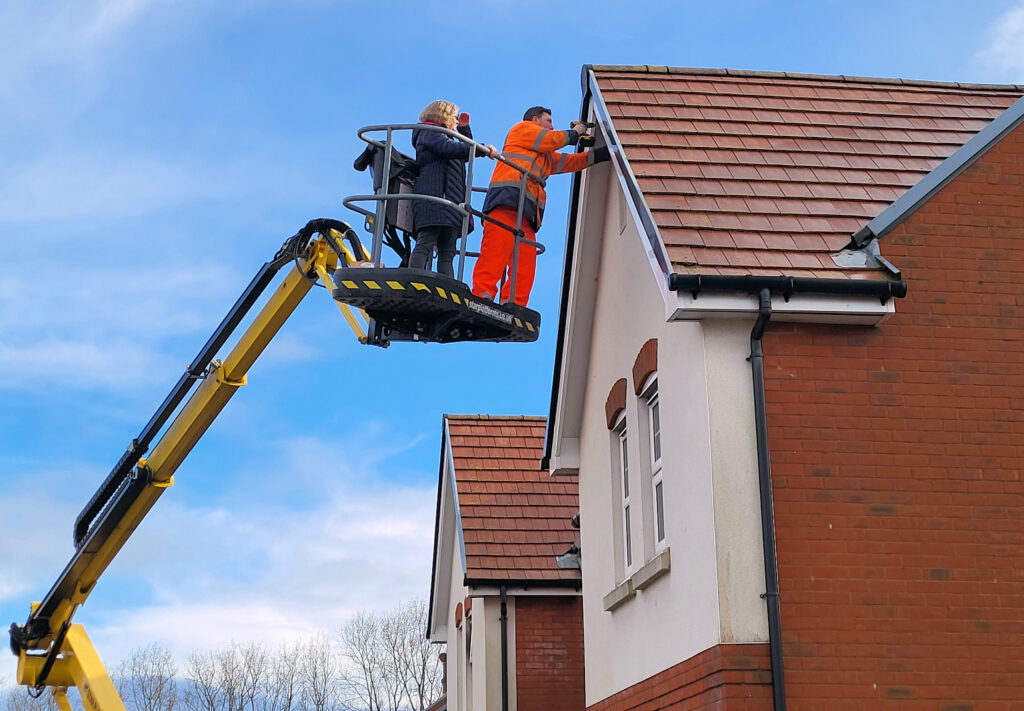
Fixing the first of the house martin nests in position
“Surprised to find a nice colony here”
Julie Hatcher added:
“It was a surprise to find a really nice colony here in Westgate, perhaps because it’s so close to the river for a good supply of mud to build their nests and plenty of flying insects to feed on.
“We hope that by putting up these artificial nests, they can move in straight away and get on with courting, breeding and raising chicks.
“After an epic migration from Africa, it can take them two weeks to build a nest. They can have three broods in a summer, but if they have to build their nest from scratch they are losing that time and might only have one brood.”
The nests are designed to look like mud cups, but are made out of much more durable materials and are firmly attached to the eaves so there is no chance of them falling down.
They have deliberately small openings so that larger birds like sparrows, which have been known to take over house martin nests, cannot get in, and are positioned so that predators can’t get to the fledgling chicks.
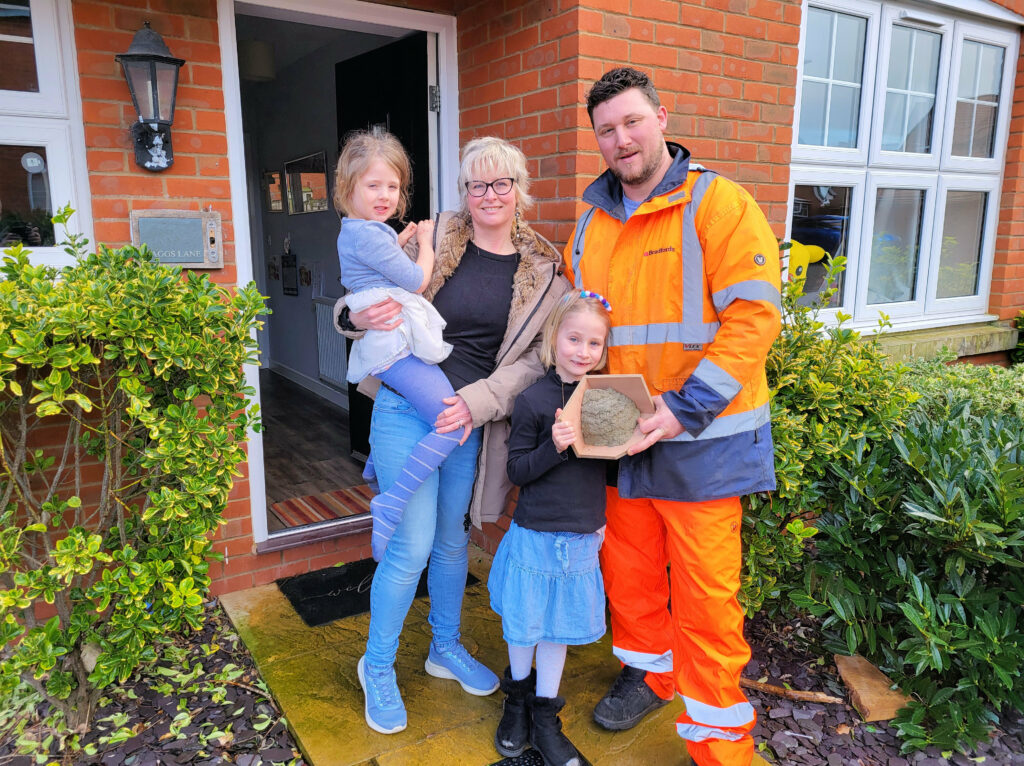
Roberta and Aidan with daughters Amber and Annabelle and the house martin nest designed for their home
Grow plants to attract flying insects
One Wareham family hoping to welcome the birds to their home this spring is Aidan and Roberta and their daughters Annabelle and Amber.
Roberta said:
“It took a while for house martins to come back to the new build estate, but once they returned about five years ago, they have come back here every year since.
“Two years ago we had a pair nest in the loft, then last year we had some trying to build at the back of the house as well, but I think they were a young pair and they didn’t quite get how to build a proper nest.
“They are lovely birds and we are very lucky to have them. We always look forward to their return and watch them as we walk to school, so it will be wonderful to have a family of them on our house.”
House martins catch insects to feed on while flying, so families can also help look out for the birds by growing plants that attract flying insects, which will help to provide a source of food for them. like buddleia, lavender, honeysuckle, marigolds and forget-me-nots.
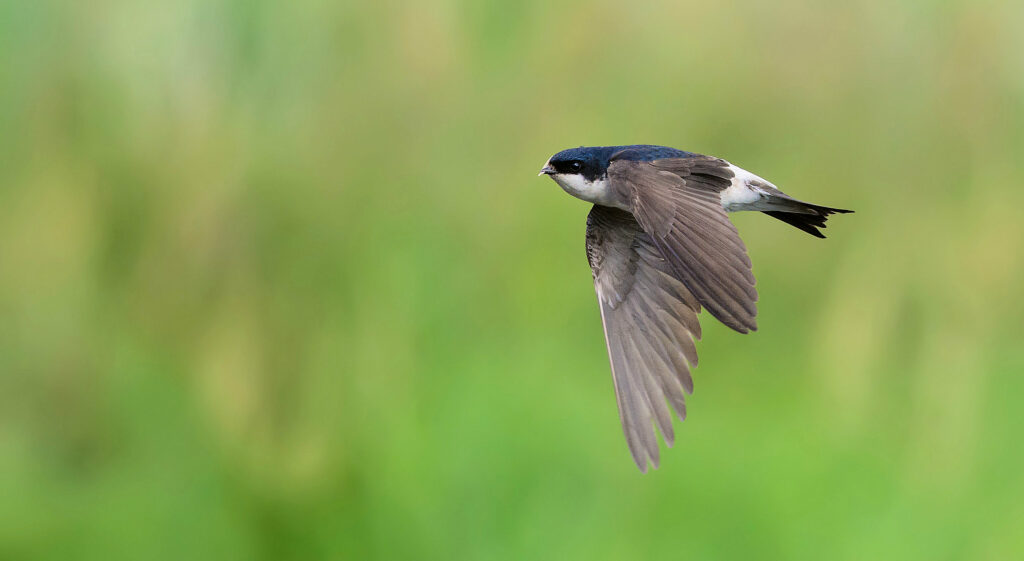
A house martin on the wing – the first birds are expected to arrive back in Purbeck by late March
Hope others will come forward
Julie Hatcher said:
“We have had funding from the Co-op community fund to put a dozen boxes up here, but we are hoping that other people will come forward and ask to do the same. This is just getting the project started and we hope it develops from here.
“There is a Swanage and Purbeck Swift group with a lot of work going on in Swanage and Corfe Castle to help swifts, but I think we are the only Purbeck group to be helping house martins.
“House martins are tiny birds and build mud cups under the eves of houses, swallows are slightly bigger with long, forked tails and like to build nests inside buildings like stables or barns. Both breeds can land and you will see them sitting on telephone wires.
“Swifts are completely different, they spend their whole life on the wing and only land when they nest, in holes in roofs or bricks.”
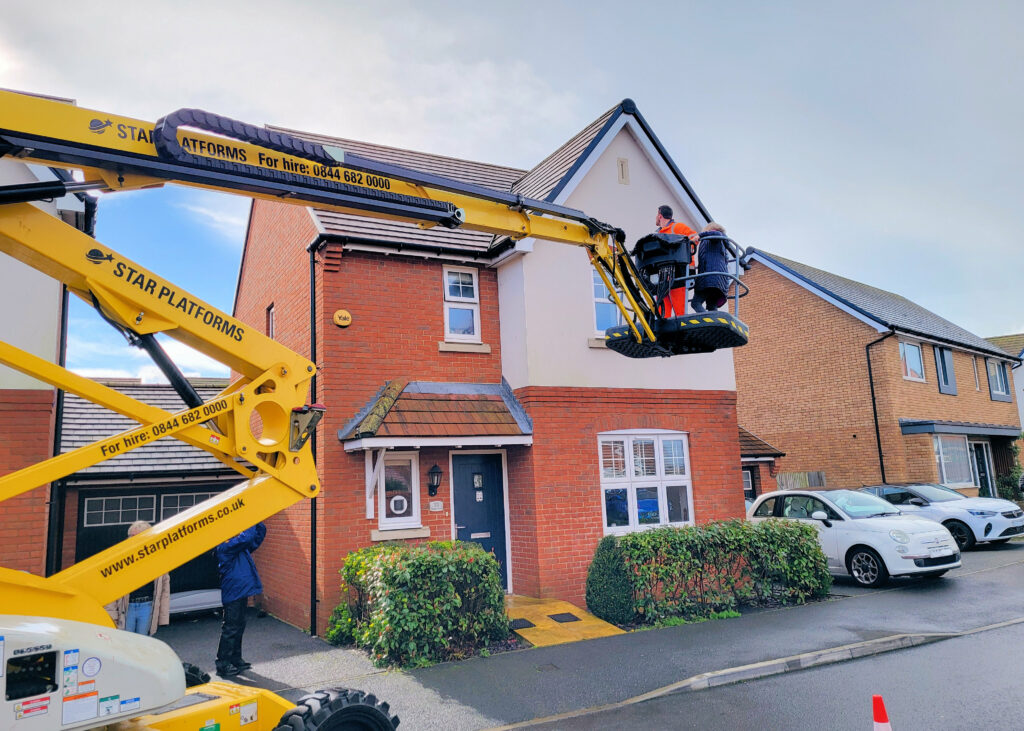
On the way up, the first of a dozen house martin homes to fix in place
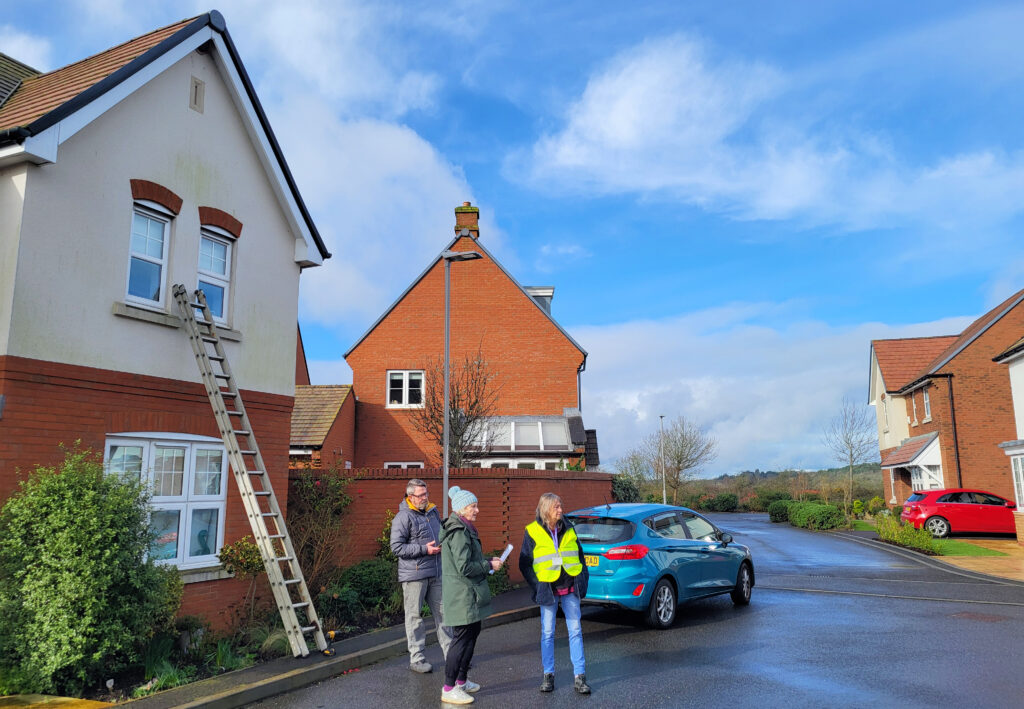
While other members of the team used more conventional ways to reach the rooftops
No brainer in terms of helping birds
Julie added:
“There is nothing that flies faster than a swift in level flight, but if they land it is very difficult for them to get airborne again, so they mate on the wing, feed on the wing and even collect nesting material on the wing, like feathers, spider webs or bits of grass floating in the air.
“They are all black, with sickle shaped wings and much bigger. They don’t arrive until May and leave in August and only have time for one brood, but as we have been insulating our homes to conserve heat, we are blocking up the holes they would have used in the past.
“There is now a national campaign to build all new homes with swift bricks – bricks with holes in so that they have a place to nest. It’s a no brainer in terms of helping the birds and really cheap to do.”
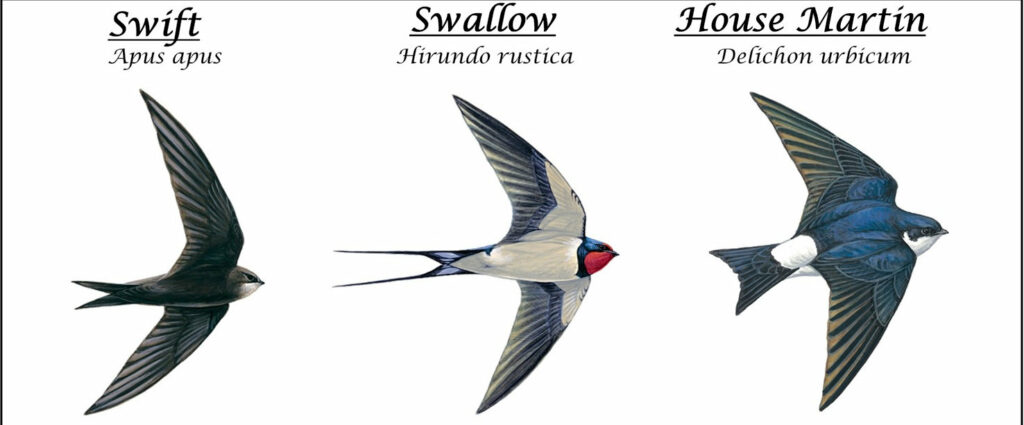
A quick guide to identifying swifts, swallows and house martins
Further information
- Get in touch with Sustainable Wareham
- Learn more about these birds at the House Martin Conservation website
